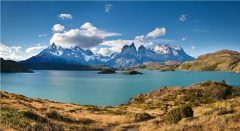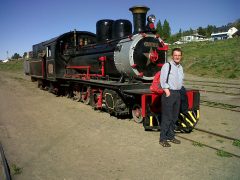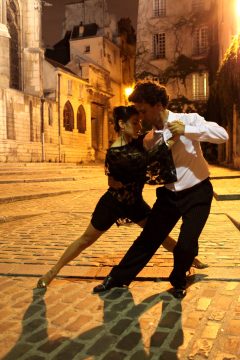Wet and Wild in Costa Rica and Nicaragua

Costa Rica had been a great experience: well-run hotels, incredibly friendly people, more wildlife than you could shake a stick at and adventure activities operated by experienced guides with excellent equipment. Now that we were heading away from the beaten track, my colleague Rosie and I wondered what was waiting for us on the other side of the border...
Nicaragua is spoken of as an ‘emerging destination’, something of a black hole on the tourist map, but in truth North Americans, Europeans and especially the English have been coming to Nicaragua for centuries, drawn for many commercial – and sometimes questionable – reasons. Indeed the east coast of Nicaragua is home to many English-speaking communities today, but few regions of the country have been more contested and fought over than the Rio San Juan, just where we were now headed.
The Rio San Juan was an important gateway for the Spanish into Lake Nicaragua and the heart of Central America. As such it also attracted English buccaneers in search of Spanish gold, and even a young and impressionable Horatio Nelson who came to fight the Spanish garrison at El Castillo in 1780. Later, during the gold rush of the 1850s, this region became the principal route between the east and west of the USA as hundreds of thousands of travellers bound for California searched out safer routes than the indian territories of the Midwest. Rio San Juan’s last opportunity to stave off its isolation was its original and ultimately failed rival bid to the Panama Canal, to make it the shipping gateway between the Atlantic and Pacific Oceans. It lost out to the Panamanian bid at the eleventh hour, cementing the region’s seclusion. A great deal of time has passed since these times of adventure and activity, but the Rio San Juan region is now just beginning to open up to more intrepid tourists keen to blaze trails and seek out adventure.
After the three-hour drive from Arenal, during which we spotted toucans and iguanas, we arrived in the small river port of Los Chiles, where the road stopped and the jungle began. We quickly processed our documents and waited on the quay as our new guides finished their paperwork with the authorities. We were soon on the river embarking on a rarely made passage between the two countries: real back-of-beyond territory.
Our first stop from Los Chiles was in San Carlos where the Rio Frio and Rio San Carlos meet on the shores of the immense freshwater Lake Nicaragua. We stopped at the small port to pass through Nicaraguan immigration then took a short walk through the lively little town, and the contrast with Costa Rica hit us immediately. Considering the proximity, San Carlos could not have been more different from the other side of the border and it took some getting used to! San Carlos is a bubbling hive of activity despite the obvious remoteness of its location. My first impression was of a strange, heady mix of indigenous Central America with a somewhat Caribbean atmosphere, but with none of the tourist trappings.
After walking around the food market we returned to the boat and continued the journey to Sabalos, where we were to spend the night. The journey from San Carlos to Sabalos took over two hours but only occasionally did we pass another boat or hollowed out canoe being laboriously paddled along the banks. In far greater abundance was the wildlife – from caiman and birds of all varieties to howler monkeys, which obliged us with a fantastic show. The boat quickly stopped as we came in sight of a group of at least five or six of them swinging in the trees, picking and eating the fruit. For about ten minutes the monkeys stayed in full view, jumping from branch to branch as we watched enthralled.
By the time we approached Sabalos and came into view of our lodge for the night, the vegetation had gradually become far denser, and the feeling of remoteness was comparable to anything in the Amazon. We were truly cut off.
Our lodge was basic but fantastically located. Built on stilts on the edges of the river, the Hotel Sabalos offered views along the Rio San Juan and Rio Sabalos, and across to the small community on the other side. From the comfort of the hotel veranda you could watch the local community at work and play: children swimming in the river, their mothers washing clothes, and the ‘rush hour' traffic as the wooden canoes were paddled back home before nightfall. But the real show began as the sun came down. The insects began to emerge from the forest, cuing an inevitable feeding frenzy: bats swooped in to feed and the prehistoric fish the Tarpon could be heard jumping from the water to feed on stragglers caught on the surface. Glimpses of the Tarpon, much prized by anglers, could be caught between the stilts of the hotel with a strong flash light and a bit of patience – just one more addition to the multitude of wildlife sightings this region has to offer. We had arrived in Nicaragua, and this was only just the beginning.
By Eamonn Devine, former Flights Reservations.
Tailor-made holidays
Flexible, custom-made holidays to Latin America created to match your exact requirements: our tailor-made itineraries are as unique as the clients for whom they are designed.
Design my tripPapagaio
Your edit for Latin American inspiration
Our exciting range of articles on Latin America explore everything from iconic destinations and lesser-known cultural gems to delicious traditional recipes. You’ll also find exclusive travel tips, first-hand client reviews and the chance to get your personal questions answered by our travel experts.
View Extraordinary Inspiration






































